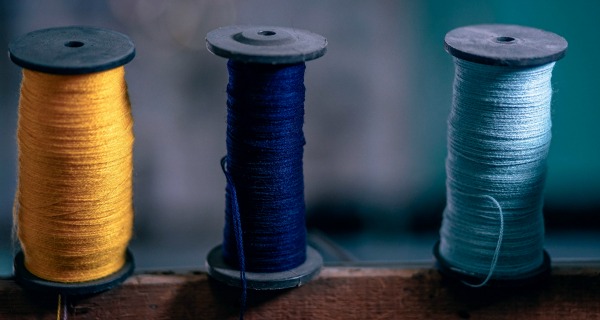
I was sitting in the middle of my living room, stacks of papers strewn out about me in a winding labyrinth—me at the center, searching for Ariadne’s thread to guide me back out. A professor in my MFA program had told me that her process was to tape all the pages of her manuscript on the walls of a room in loops, and she would walk through the book like a physical space. It helped her edit and make choices, especially big ones like arranging segments and ordering stories in a larger work. Me? I was hyperventilating at the nexus of my own collection. Seeing the vastness of it all laid out in 8" x 11" white rectangles around me was overwhelming and, quite frankly, terrifying. How would I ever make a cohesive whole out of all of this?
I had all these fragments scattered across the floor, these stories, like puzzle pieces, but with higher stakes, like organs I had to arrange in the right place, the right order, or it wouldn’t come alive. I could throw it together, sure. I had all the parts and I could make something with it—but I wanted it to breathe, to live.
Screw waiting on Ariadne. I scooped up all the papers, piled them in a corner and forgot about them for a few days. But the truth was, I was still searching for that yarn, for the thread that would tie everything together and lead me out of the maze.
Ikebana is the Japanese art of flower arranging, and an important tenet of the form is that the individual flower should influence the way the bouquet is arrayed. That the parts determine the whole. Author Steven Dunn offered this metaphor to me recently, and I realized, in hindsight, that this was exactly how I had managed to put my story collection together (after the breakdown between piles of my manuscript in my living room). At that point, I wasn’t ready to look at the macro, the big picture; I needed to spend a little more time delving into the specifics of the micro. I needed to examine the stories to find the linkages and echoes tying them together, to discover the ways they were already in conversation with each other, to explore what it was that wove them to each other.
What eventually transpired was a somewhat organized and far more organic process of zooming in and out between the pieces and the whole. I did finally find my way out of the labyrinth (and yes, I did lay the stories out physically again, without collapsing in panic), and what I realized when I got to the exit’s mouth was that I had been following Ariadne’s string all along—the path was just longer than I had imagined.
Courtney E. Morgan is teaching our 4-Week: Assembling a Short Story Collection class starting April 20. She has an MFA from the University of Colorado, Boulder, where she has also taught creative writing workshops for five years. Her collection of stories, The Seven Autopsies of Nora Hanneman, was a semifinalist for the FC2 Ronald Sukenick Innovative Fiction Prize.

